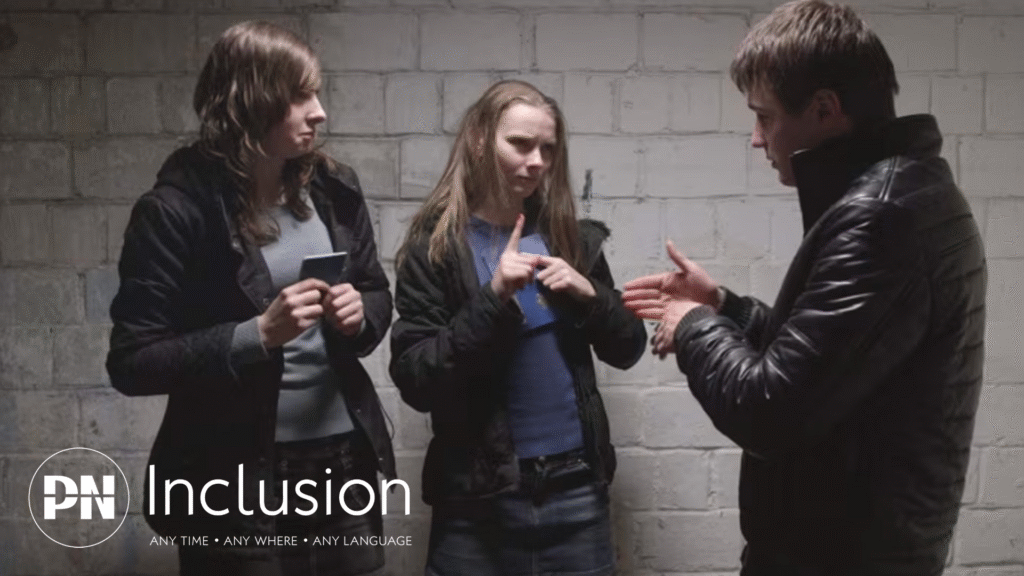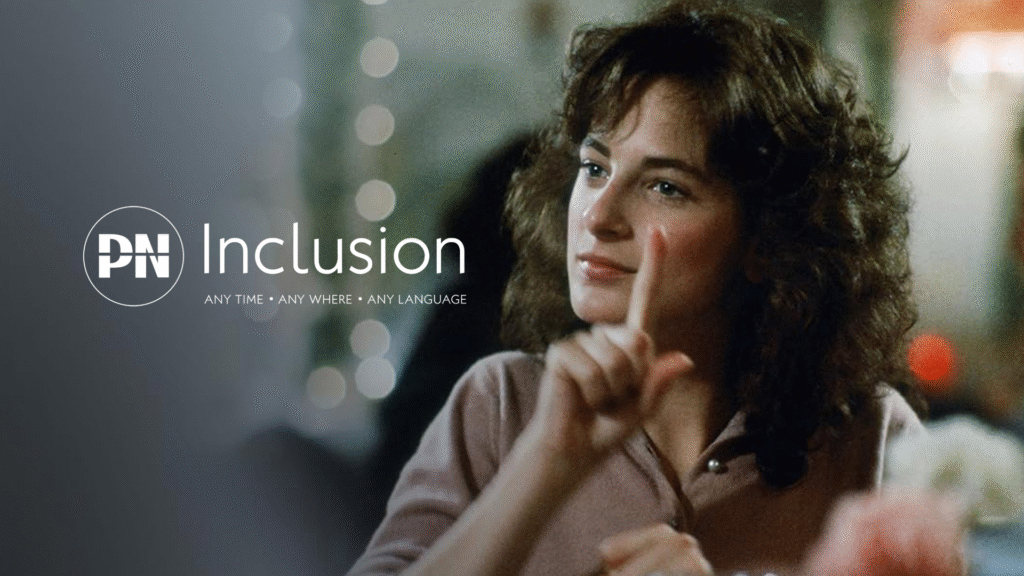At Prestige Network Inclusion, we’ve decided to periodically showcase films and artworks that highlight the lives, stories, and brilliance of the Deaf community. In this article, we’re sharing four powerful films that portray Deaf individuals, their talents, resilience, and the champions of inclusion who support them.
We believe in inclusion, accessibility, and actively making it happen through BSL interpreting, Deaf awareness workshops, and bridging the gap between the hearing and non-hearing worlds. Let’s all embrace inclusivity and work together make where everyone feels valued, understood, and has equal access to opportunities.
1. Children of a Lesser God (1986)
Children of a Lesser God is a groundbreaking film that depicts the intense relationship between Sarah Norman (played by Marlee Matlin), a Deaf woman, and James Leeds (played by William Hurt), a hearing speech teacher. James arrives at a school for the Deaf to teach the students to speak verbally. However, he encounters Sarah, a stubborn student who refuses to speak out loud. She chooses to communicate solely through American Sign Language (ASL), which creates tension in their relationship.
The film explores the balance between respecting Deaf culture and adapting to a world dominated by spoken language. Moreover, the film captures the complex dynamics around deafness, emphasizing the importance of understanding sign language as a collective and personal expression of identity. Additionally, it challenges audiences to recognize the value of non-verbal communication, rather than viewing it as something that needs to be fixed or changed. Marlee Matlin’s performance made history as she became the first Deaf actress to win an Academy Award for Best Actress. So, don’t miss it!
2. CODA (2021)
CODA, which stands for Child of Deaf Adults, tells the story of Ruby Rossi, the only hearing member of a Deaf family. Ruby serves as her family’s primary interpreter, helping them deal with the hearing world. She also works tirelessly on her family’s fishing boat while pursuing her high school life and passion for singing. When her music teacher finally recognizes Ruby’s talent, she is encouraged to follow her music dreams. However, this creates conflict between her and the family, particularly when their business faces troubles, and they struggle to understand Ruby’s desire for self-growth.
CODA received widespread acclaim and won the Academy Award for Best Picture in 2022. The film is a moving and heartwarming portrayal of the intersection between Deaf and hearing worlds. It beautifully showcases ASL as an essential part of communication within the Rossi family, while exploring themes of identity, family loyalty, and self-expression. Troy Kotsur, who played Ruby’s father, became the first Deaf male actor to win an Academy Award. Using sign language on the stage, he dedicated his award to “the Deaf community, the CODA community, and the disabled community.” Make it a priority to watch!
3. The Miracle Worker (1962)
The Miracle Worker is based on the true story of Helen Keller and her patient teacher Annie Sullivan. Helen, who was both Deaf and blind, had been left unable to communicate with the outside world after a childhood illness. The film follows Annie’s daring journey as she teaches Helen how to communicate through sign language, starting with basic signs like water, father, mother, and doll.
Helen’s significant moment comes when she finally understands that the signs Annie has been showing her are connected to objects and concepts in the world. The film is a tribute to the power of sign language and its vast capacity to unlock communication for those who cannot hear or see. The Miracle Worker is also a story of perseverance and resistance, indicating how learning sign language bestowed Helen Keller a means of understanding the world. Keller went on to become a globally recognized advocate for people with disabilities. Moreover, the film portrays the deep connection that can be achieved through sign language, especially in cases where other forms of communication are impossible. It is a classic and a must-watch!
4. The Tribe (2014)
The Tribe, a Ukrainian film directed by Myroslav Slaboshpytskyi, is a bold and fearless cinematic experience like almost no other. The entire film is performed in Ukrainian Sign Language without spoken dialogue or even subtitles. The story revolves around Sergey, a Deaf teenage boy who arrives at a boarding school for the Deaf and is quickly drawn into a criminal underworld run by other students. The film follows young and naïve Sergey as he gets involved in violent and illegal activities, bringing up questions regarding power, morality, survival, and the darker aspects of human desire.
The Tribe is unique not just for its use of sign language but also for its lack of verbal communication or use of subtitles. The absence of translation forces viewers to rely solely on body language, expressions, and signs, providing them with a deeper, more realistic experience of Deaf communication. This film pushes the boundaries of traditional storytelling, making sign language the main narrative tool. Its crude, raw, and sincere representation of life at the school illuminates issues within the Deaf community, such as isolation, loneliness, and vulnerability, while also presenting a film experience unlike any other. Dare to experience it!

Epilogue: The Power of Sign Language in Films
All of these films—Children of a Lesser God, CODA, The Miracle Worker, and The Tribe—are beyond entertainment. They serve as doors to the lives of the Deaf community, exposing the beauty, complexity, vitality, and necessity of sign language. Each film shares a distinct story that displays the social and cultural significance of Deaf identity and the key role sign language plays in building connection, facilitating expression, and promoting understanding. As we celebrate the International Day of Sign Languages on September 23rd, these films remind us of the importance of diversity and inclusivity in all forms. By embracing sign language and Deaf culture, we make way for richer communication and a more inclusive society for all.

